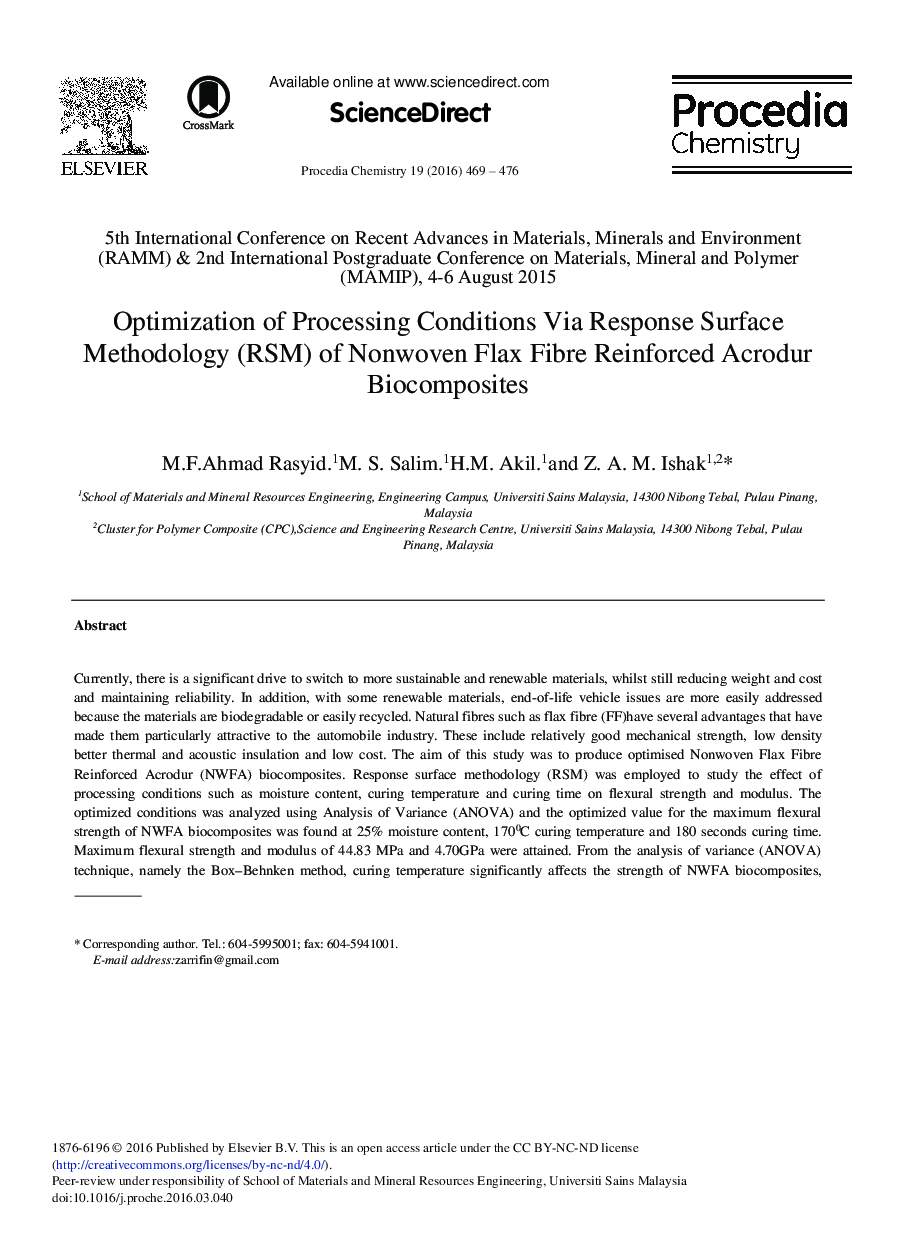| Article ID | Journal | Published Year | Pages | File Type |
|---|---|---|---|---|
| 239853 | Procedia Chemistry | 2016 | 8 Pages |
Currently, there is a significant drive to switch to more sustainable and renewable materials, whilst still reducing weight and cost and maintaining reliability. In addition, with some renewable materials, end-of-life vehicle issues are more easily addressed because the materials are biodegradable or easily recycled. Natural fibres such as flax fibre (FF)have several advantages that have made them particularly attractive to the automobile industry. These include relatively good mechanical strength, low density better thermal and acoustic insulation and low cost. The aim of this study was to produce optimised Nonwoven Flax Fibre Reinforced Acrodur (NWFA) biocomposites. Response surface methodology (RSM) was employed to study the effect of processing conditions such as moisture content, curing temperature and curing time on flexural strength and modulus. The optimized conditions was analyzed using Analysis of Variance (ANOVA) and the optimized value for the maximum flexural strength of NWFA biocomposites was found at 25% moisture content, 1700C curing temperature and 180 seconds curing time. Maximum flexural strength and modulus of 44.83 MPa and 4.70 GPa were attained. From the analysis of variance (ANOVA) technique, namely the Box–Behnken method, curing temperature significantly affects the strength of NWFA biocomposites, followed by the moisture content and curing time. The P-value of the model of the experiment is less than 0.05 and the determination coefficient (R2) is nearly 1 suggesting that the model is significant and implies on the precision and processability in the production.
